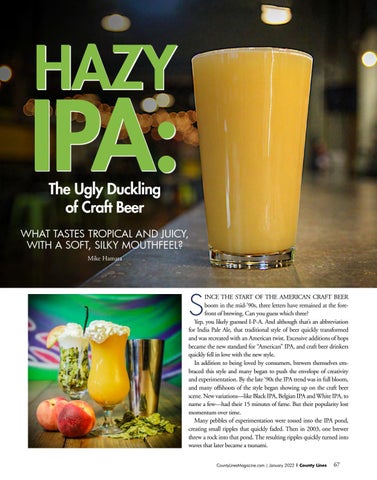HAZY
IPA: The Ugly Duckling of Craft Beer
WHAT TASTES TROPICAL AND JUICY, WITH A SOFT, SILKY MOUTHFEEL? Mike Hamara
S
INCE THE START OF THE AMERICAN CRAFT BEER boom in the mid-’90s, three letters have remained at the forefront of brewing. Can you guess which three? Yep, you likely guessed I-P-A. And although that’s an abbreviation for India Pale Ale, that traditional style of beer quickly transformed and was recreated with an American twist. Excessive additions of hops became the new standard for “American” IPA, and craft beer drinkers quickly fell in love with the new style. In addition to being loved by consumers, brewers themselves embraced this style and many began to push the envelope of creativity and experimentation. By the late ‘90s the IPA trend was in full bloom, and many offshoots of the style began showing up on the craft beer scene. New variations—like Black IPA, Belgian IPA and White IPA, to name a few—had their 15 minutes of fame. But their popularity lost momentum over time. Many pebbles of experimentation were tossed into the IPA pond, creating small ripples that quickly faded. Then in 2003, one brewer threw a rock into that pond. The resulting ripples quickly turned into waves that later became a tsunami. CountyLinesMagazine.com | January 2022 | County Lines
67








